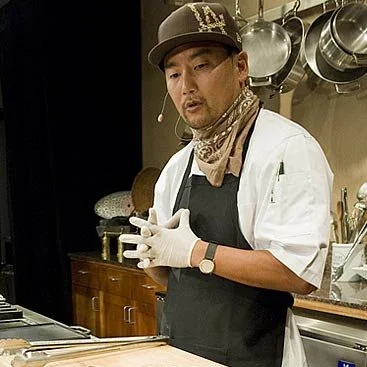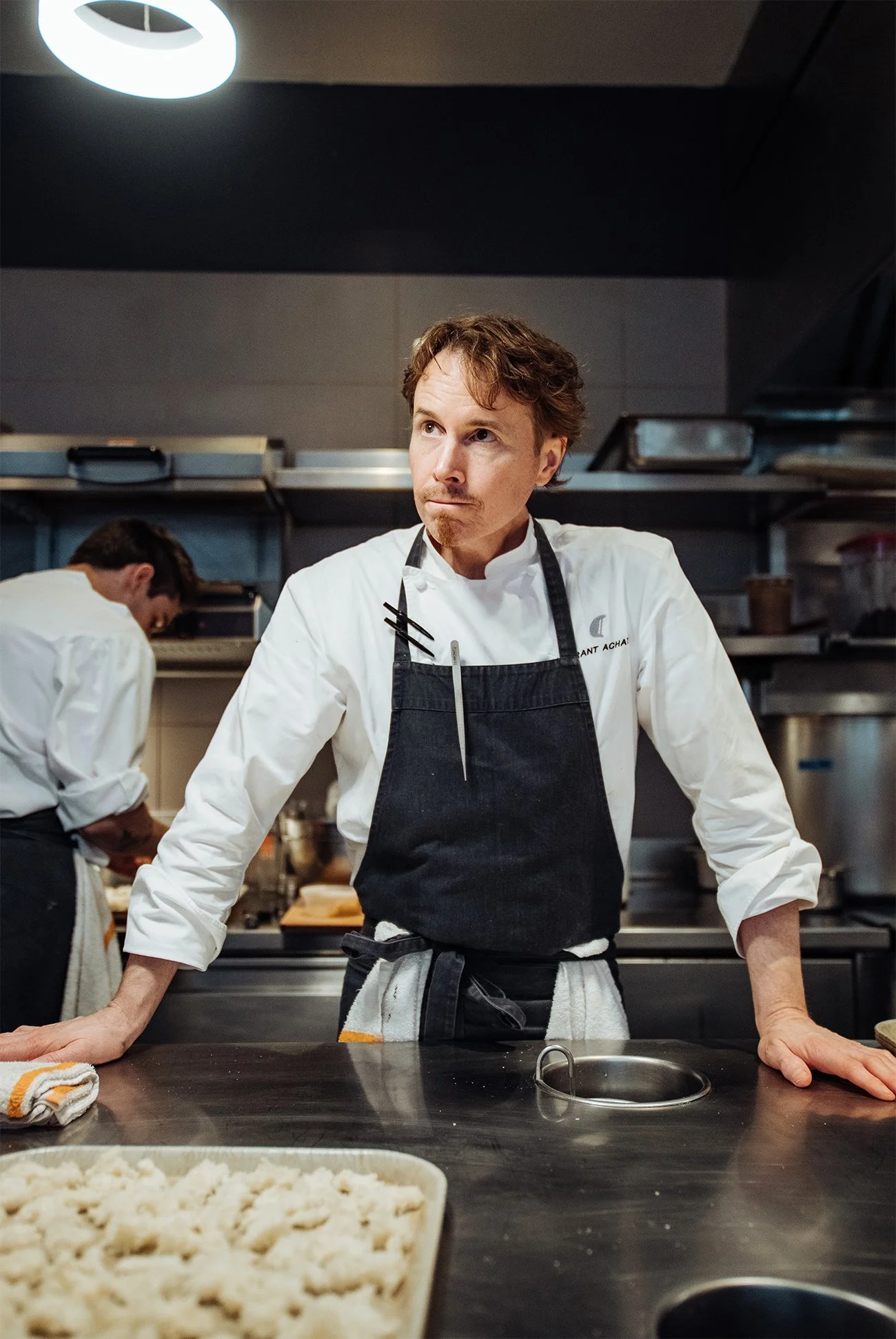California Culinary Visionaries: How Our Food Future Is Shaped
In the shadow of Napa Valley’s rolling vineyards, the Culinary Institute of America at Greystone stands like a temple of gastronomy, its ivy-clad walls whispering stories of ambition, precision, and dreams realized.
This isn’t just a school, it’s a crucible where the heat of the kitchen meets the spark of innovation, forging chefs who don’t just cook but redefine what food can be.
1. The Big Players:
Legacy and Leadership
Stepping into the Culinary Institute of America at Greystone feels like entering the pantheon of culinary greatness. These storied halls, echoing with the sounds of knife blades against chopping boards and the hum of creativity, have been a birthplace for revolutionaries. The alumni here aren’t just chefs; they are architects of food movements, storytellers, and artists whose impact has reshaped dining as we know it. Let’s take a closer look at three of Greystone’s most iconic graduates, whose legacies continue to inspire the next generation.
Roy Choi:
The People Chef
Roy Choi didn’t just cook food; he started a movement. When his Kogi BBQ trucks rolled out into the streets of Los Angeles, they brought with them a seismic shift in how we think about food. Choi proved that high-quality, Michelin-worthy flavors didn’t have to sit atop white tablecloths—they could be served in a paper tray, enjoyed on the go, and priced for everyone.
His Legacy: Choi’s Korean-Mexican fusion, from short rib tacos to kimchi quesadillas, became a rallying cry for cultural blending and democratized dining.
Why He Matters: In a world where fine dining often felt exclusionary, Choi reminded us that food is for everyone. He’s not just a chef; he’s a cultural icon, breaking down barriers with every bite.
Anthony Bourdain:
The Global Storyteller
Anthony Bourdain was more than a chef—he was a bridge. With a chef’s knife in one hand and a pen in the other, Bourdain used his Greystone-honed skills to craft meals, yes, but more importantly, to craft connections. Through his television series and books, he showed the world that food is a universal language, one that can transcend borders, politics, and prejudices.
His Legacy: Bourdain brought the stories of street vendors, fishermen, and home cooks into our living rooms, making us care about the people behind the plates.
Why He Matters: He transformed the act of eating into an act of empathy, showing us that every meal is a story waiting to be told. His culinary training at Greystone was the foundation upon which he built his globe-spanning narratives.
Grant Achatz:
The Avant-Garde Alchemist
Grant Achatz doesn’t just serve food—he orchestrates sensory experiences. The molecular gastronomy pioneer behind Alinea has redefined what a meal can be.
Dining at Achatz’s table is not just about taste; it’s about wonder, surprise, and immersion. From edible helium balloons to dishes that arrive as clouds of scented vapor, Achatz’s creations blur the line between food and art.
His Legacy: Achatz turned molecular gastronomy from a curiosity into a movement, inspiring chefs worldwide to rethink the boundaries of the dining experience.
Why He Matters: His time at Greystone sharpened his skills, but it’s his fearless imagination that transformed those skills into a revolution, making every meal a multisensory journey.
The Impact of Giants
What ties these culinary titans together isn’t just their Greystone education—it’s their ability to see food as more than sustenance. They’ve shown us that food is culture, connection, and creativity. For students walking those same halls today, these legends aren’t just names on a roster; they are proof that with vision and passion, the kitchen can be a stage, the street a classroom, and a meal a revolution.
Hyperlink Highlight: Explore their offerings here: CIA Programs.
2. What’s New:
Adapting to the Modern Table
Even an institution as venerable as the CIA must evolve, and Greystone has embraced the changing tides of the culinary world with bold, forward-thinking initiatives.
Plant-Based Innovation
With plant-based dining no longer a trend but a movement, Greystone’s new courses reflect a seismic shift in the way we eat:
What It Covers: Techniques for creating flavor-packed, nutrient-dense dishes using plant-based ingredients. From vegan charcuterie to dairy-free cheese, students learn to innovate with plants.
Why It Matters: These programs prepare chefs for a world increasingly focused on health-conscious and environmentally sustainable menus.
Critique: Some argue that this emphasis risks sidelining traditional culinary foundations.
Wine Pairing Excellence
Napa Valley is more than a backdrop—it’s a classroom. Greystone’s wine studies are unparalleled:
The Program: Students master pairing techniques, vineyard management, and sensory analysis, often leaving with sommelier certification.
The Impact: This integration of wine and food education creates chefs who understand dining as a holistic experience.
Sustainability Core
From food waste to carbon-neutral kitchens, sustainability is no longer optional—it’s a mandate:
What Students Learn: Techniques to reduce waste, source ethically, and design environmentally conscious menus.
Critique: The high tuition costs of these programs limit accessibility, perpetuating elitism in culinary education.
Applause: Greystone graduates are shaping a more sustainable industry, influencing practices from fast casual to fine dining.
3. The Bubble Debate:
Napa’s Charm vs. Reality
Greystone’s Napa Valley setting is both its greatest strength and its most controversial feature.
Praise:
The Napa Advantage
The proximity to local farms, wineries, and artisanal producers offers students an unparalleled food ecosystem:
Hands-On Learning: Students engage directly with the people and processes behind their ingredients, gaining insights few other schools can offer.
Inspiration Everywhere: From vineyard strolls to farmers’ markets, Napa’s beauty and bounty create a unique environment for culinary creativity.
Critique:
The Insular Bubble
Yet, the idyllic setting can feel disconnected from the realities of urban kitchens:
Lack of Chaos: Real-world kitchens are fast-paced and high-stress, an environment that’s hard to replicate in serene Napa.
Accessibility Issues: Napa’s exclusivity extends to its cost of living, making it challenging for students from diverse backgrounds to thrive here.
Hyperlink Highlight: Explore Napa Valley.
4. The Diners’ Perspective:
How CIA Shapes What We Eat
At the end of the day, Greystone’s legacy is measured not just in the chefs it produces but in the experiences they create for us, the diners.
The Good
Elevated Dining: Greystone graduates are behind many of California’s Michelin-starred restaurants, setting global standards for culinary excellence.
Sustainable Menus: With sustainability baked into their training, these chefs are leading the charge in reducing food waste and promoting local sourcing.
Plant-Based Revolution: Expect to see more innovative vegan and vegetarian options across menus, a direct result of Greystone’s evolving curriculum.
The Bad
Inconsistent Accessibility: The high cost of education means fewer diverse voices entering the field, potentially limiting innovation.
Perfection vs. Personality: The school’s emphasis on precision can sometimes overshadow individuality, leaving diners longing for a more personal touch.
Final Thoughts:
A Culinary Temple for the Future
The Culinary Institute of America at Greystone is more than a school—it’s a movement. It bridges the traditions of classical cuisine with the demands of a rapidly changing world, shaping chefs who think critically, act sustainably, and cook passionately. For diners, the impact is clear: every bite, every sip, every perfect plate carries the essence of Greystone’s legacy.
Hyperlink Highlight: Learn more about their programs: CIA at Greystone.
Hashtags: #CIAGreystone #CulinaryInnovation #SustainabilityInFood #NapaValleyEats #PlantBasedCooking #FoodLeadership #CulinaryEducation
Let this inspire you not just to cook, but to think, to innovate, and to taste the world anew.




